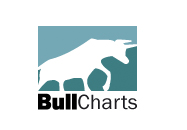
 |
NEW INDICATORS |
Post Reply 
|
| Author | |
Seahorse 
Regular 

Joined: 11 Sep 2004 Location: Australia Posts: 35 |
 Post Options Post Options
 Quote Quote  Reply Reply
 Topic: NEW INDICATORS Topic: NEW INDICATORSPosted: 01 Jan 2005 at 2:31pm |
|
G'day Again... In response to your second question "2. Could these be shown as Histograms - like LW indicated in the Guppy Newsletter of 30.01.04...." You should be able to display this indicator as a Histogram by simply altering the "style"
Regards Seahorse |
|
|
My Reality Check bounced

|
|
 |
|
Seahorse 
Regular 

Joined: 11 Sep 2004 Location: Australia Posts: 35 |
 Post Options Post Options
 Quote Quote  Reply Reply
 Posted: 01 Jan 2005 at 2:14pm Posted: 01 Jan 2005 at 2:14pm |
|
G'day Ric.... In regard to the Hull MMA's, you may find the article posted below of interest......I think it was written by none other than, Alan Hull himself!! Regards Seahorse
|
|
|
My Reality Check bounced

|
|
 |
|
Rhubarb 
Newbie 
Joined: 11 Sep 2004 Location: Australia Posts: 10 |
 Post Options Post Options
 Quote Quote  Reply Reply
 Posted: 01 Jan 2005 at 11:59am Posted: 01 Jan 2005 at 11:59am |
|
I guess this is directed to Peter whose help in these matters is invaluable :- BC provides - under Indicators/Guppy - 2 excellent Indicators called :- Guppy MMACD-H$ Guppy MMACD-H% and there is also a Ribbon to complement these indicators which were developed and written by the well known and respected Leon Wilson. HOWEVER, these are based on DAILY values and do not reflect what many of us would need for MMA interpretation on Hull style trading. 1. Could we please have these Indicators written with Hulls WEEKLY MMA values... 2. Could these be shown as Histograms - like LW indicated in the Guppy Newsletter of 30.01.04.... 3. Could the Scales for these reflect the same sort of values as shown in the article... 4. Could the Ribbon also be available to complement these Indicators... Many of us will, consequently, be able to build this into our Scans so that the visual part of MMA readings can be assigned to the scrap heap - ie we then have the ability to mechanise the interpretation of the Hull MMAs. If we think about what this will achieve for us, I am sure it will be regarded as a great step forward Ric Richardson |
|
|
Rhubarb 4 All
|
|
 |
|
Post Reply 
|
| Forum Jump | Forum Permissions  You cannot post new topics in this forum You cannot reply to topics in this forum You cannot delete your posts in this forum You cannot edit your posts in this forum You cannot create polls in this forum You cannot vote in polls in this forum |